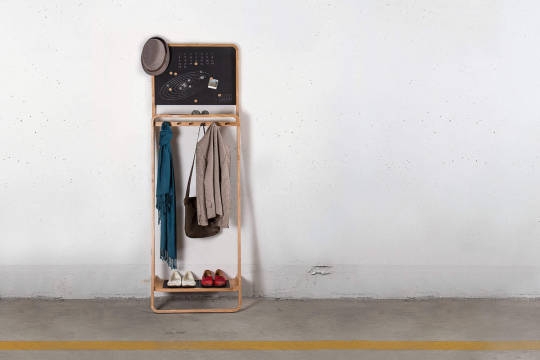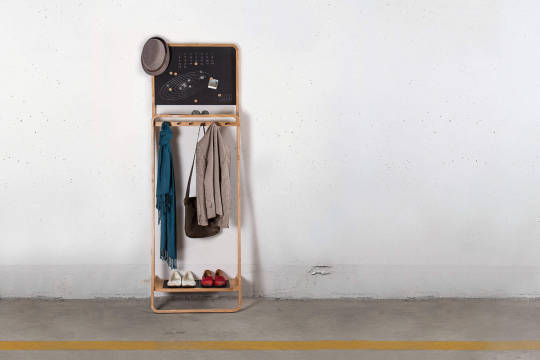#Jason van der Burg
Photo

The Leaning Loop, l'attaccapanni multiuso https://www.design-miss.com/leaning-loop-lattaccapanni-multiuso/ The Leaning Loop, l’attaccapanni #multiuso, disegnato da Jason van der Burg è un #appendiabiti adatto ai piccoli spazi. Un organizzatore verticale multiuso…
0 notes
Text

New artwork and trailer for Valter Skarsgård's new series 'Börje - The Journey of a Legend' coming to ViaPlay on November 19, 2023
Börje - The Journey of a Legend | Trailer | A Viaplay Series
youtube
Cast
Valter Skarsgård, Hedda Stiernstedt , Jason Priestley, A.C. Petersen, Jack Langedijk, Oscar Skagerberg, Kelly Van der Burg, Jon McClaren.
Directed by
Amir Chamdin
Written by
Martin Bengtsson
24 notes
·
View notes
Text
Börje - The Journey of a Legend
Börje - The Journey of a Legend (Serie 2023)
#ValterSkarsgård #HeddaStiernstedt #JasonPriestley #ACPetersen #JackLangedijk #OscarSkagerberg
Mehr auf:
SerieJahr: 2023- (November)
Genre: Biografie / Drama
Hauptrollen: Valter Skarsgård, Hedda Stiernstedt, Jason Priestley, A.C. Petersen, Jack Langedijk, Oscar Skagerberg, Kelly Van der Burg, Jon McClaren …
Serienbeschreibung: Die Geschichte von Börje Salming, dem ersten schwedischen Spieler, der in die Eishockey Hall of Fame aufgenommen wurde, verfolgt seinen Weg von bescheidenen Anfängen bis…

View On WordPress
#A.C. Petersen#Börje Salming#Hedda Stiernstedt#Jack Langedijk#Jason Priestley#Oscar Skagerberg#Valter Skarsgård#Viaplay
2 notes
·
View notes
Text

Direttamente da un castello incantato... È della Disney ma online si trova anche da Asos, qui
1 note
·
View note
Photo


CALIFICACIÓN PERSONAL: 7 / 10
Título Original: It. Chapter Two
Año: 2019
Duración: 169 min.
País: Estados Unidos
Director: Andy Muschietti
Guion: Gary Dauberman, Jeffrey Jurgensen (Novela: Stephen King)
Música: Benjamin Wallfisch
Fotografía: Checco Varese
Reparto: Jessica Chastain, James McAvoy, Isaiah Mustafa, James Ransone, Bill Skarsgård, Jay Ryan, Bill Hader, Andy Bean, Xavier Dolan, Will Beinbrink, Jack Dylan Grazer, Teach Grant, Sophia Lillis, Taylor Frey, Finn Wolfhard, Jake Weary, Jaeden Martell, Nicholas Hamilton, Jess Weixler, Jeremy Ray Taylor, Peter Bogdanovich, Jake Sim, Jackson Robert Scott, Stephen King, Owen Teague, Javier Botet, Joan Gregson, Wyatt Oleff, Troy James, Kate Corbett, Chosen Jacobs, Lyla Elliott, Jason Fuchs, Stephen Bogaert, Logan Thompson, Kelly Van der Burg, Janet Porter, Ari Cohen, Elena Khan, Ryan Kiera Armstrong, John Connon, Anthony Ulc, Rob Ramsay, Divan Meyer
Productora: New Line Cinema / KatzSmith Productions / Lin Pictures / Vertigo Entertainment
Género: Drama, Fantasy, Horror
https://www.imdb.com/title/tt7349950/
TRAILER: https://www.youtube.com/watch?v=xhJ5P7Up3jA
0 notes
Text
The Plans for Rehavia
Begun in 1922, the Rehavia neighborhood served as a “garden suburb” for Jewish families of Jerusalem who sought to escape the crowded conditions elsewhere in the city. The Palestine Land Development Corporation purchased the land used for building from the Greek Orthodox Patriarchate – which had acquired much land in the city during the 19th century and now found itself bankrupt in the 1920’s.
Rehavia was built in two stages during the British Mandatory period between 1925 and 1930.
The first stage, called Rehavia Aleph, was bordered by King George Street to the east, Ramban Street to the south, Ussishkin Street to the west, and Keren Kayemet Street to the north.
The second stage was completed in the early 1930s, between Jabotinsky Street, Ramban Street and Gaza Street.
The Results
Originally, Rehavia was meant to be a tolerant and liberal Jewish community with a modern outlook. Rehavia became an upper-class Ashkenazi Jewish neighborhood, home to professors and intellectuals. Almost all of Rehavia’s streets were named for poets and sages who lived during the Spanish Golden Age. The modern “International” houses integrated local elements, Middle Eastern or ancient. The homes were built in Jerusalem stone. The streets were lined by trees public gardens, playgrounds and even a tennis court. Don’t forget the vegetable gardens. Due to the arrival of olimim – refugees/emigrees from Nazi Germany – Rehavia earned its nickname “a Prussian island in an Oriental sea.”
Architect Richard Kaufmann designed Rehavia. He also planned many of Jerusalem’s neighborhoods, the plan provided for a central avenue – Ramban – crisscrossed by streets and Keren Kayemet, a curving street with many small shops.
Richard Kauffmann
This architect deserves a post of his own. His heritage helped create Zionist history. Richard Kauffmann was born in Germany. Arthur Ruppin met him in Germany and invited him to design new Jewish settlements in Palestine. Kauffmann immigrated to Palestine in 1920 and began his work as an architect. Ludwig Mies van der Rohe’s “International Style” influenced Kauffmann’s work. The International Style was nicknamed “Bauhaus” in Palestine and many tour guides still call it so. In contrast to the usual style of Jewish building at the beginning of the century. Then Jewish building was arranged around closed courtyards. In contrast, the houses of Rehavia faced outward, to the outside world.
His “Bauhaus” style was very popular in Palesting and became basis of the White City, as Tel Aviv’s International Style architecture became known.
He designed, almost alone, new rural villages, kibutzim and moshavim in the Jezreel Valley: most notably Ein Harod, Kfar Yehoshua, Degania Alef, Kfar Yehezkel and Nahalal.
Kauffmann designed some new Israeli cities: Afula, Herzliya, Rehavia. His neighborhood include Beit Hakerem, Talpiyot and Kiryat Moshe in Jerusalem, and Hadar HaCarmel, Neve Sha’anan, Bat Galim and Central Carmel in the city of Haifa.
Quasi Government Institutions
Jewish National Fund purchased some of the land from the Palestine Land Development Corporation (PLDC). On this land the JNF built the Gymnasia Rehavia high school on Keren Kayemet Street, Yeshurun Synagogue on King George Street, and the Jewish Agency building at the corner of King George and Keren Kayemet Street. These quasi government institutions were meant to replace the Temple in the Old City. All these buildings overlook the Old City.
Keren Kayemeth LeIsrael Road
Keren Kayemet Street
At the corner of Keren Kayemet Street there is a three-winged structure National Institutions Building with a large open courtyard, designed by Yochanan Rattner, This building housed the Jewish Agency, the Jewish National Fund and Keren Hayesod. Rattner gave it slanted walls, as in the walls of the Old City. Rattner, who was the first head of the Hagana’s National Command, also designed the Geography building in the Hebrew University of Jerusalem, the Aeronautics building of the Technion in Haifa, the Kefar ha-Yarok Agricultural School, Bet Berl, Midreshet Ben Gurion, the Reali School in Haifa, and Beit Yad LeBanim in Beer Sheva.
Menachem Ussishkin, head of the Keren Kayemet (Jewish National Fund or KKL) decided that the street with the KKL headquarters should be changed from Shmuel Hanaggid Street to Keren Kayemet L’Yisrael Street. He transferred the name Shmuel Hanaggid Street to a nearby block.
National Institutions Building
Palestine’s second modern high school, after Gymnasia Herzliya in Tel Aviv, the Rehavia Gymnasium, was built in 1928 on Keren Kayemet Street.
Rehavia Gymnasium
Ramban Street
8 Ramban Street: The Greek Orthodox Church erected the windmill on Ramban Street some 150 years ago. When in operation, it ground wheat from the fields in the area into flour to feed Orthodox pilgrims visiting the Holy City.
Windmill on Ramban Street
26 Ramban Street: Gad Frumkin, the only Jewish Supreme Court justice to serve during the British Mandate, built the lovely dwelling on the corner of Ramban and Rehov Ibn Ezra in 1924. The sign “Havatzelet” (lily) over the door at #26 was a gesture to his father, who published a historic newspaper of that name for over 40 years.
Menachem Ussishkin
32 Ramban Street: Many years ago, I live on Ussishkin Street as a student, but this Ussishkin tale is new to me. As the story goes, Menachem Ussishkin was chairman of the JNF for 20 years. He was housed in a grand two-story villa near the Old City Walls, built by Swiss missionary banker who called it “Mahanaim” for the biblical verse:
“When Jacob saw them, he said, “This is the camp of God!” [Genesis 32:2]
So Ussishkin named that place Mahanaim (camp). In 1927, however, a severe earthquake damaged the British High Commissioner’s residence in Talpiot. The British commandeered Mahanaim and replaced Ussishkin with the commissioner. Ussishkin inscribed the name “Mahanaim” over the door of his new home at #32 Ramban. He also managed to change the cross street named for Yehuda Halevi (a Spaniard, and one of the greatest Jewish poets of all time) to Rehov Ussishkin in honor of his 70th birthday in 1933.
Rabbi Yehuda Halevi was not forgotten by city fathers. When Jerusalem was reunified in 1967, the steps from Misgav Ladach Street to the Western Wall Plaza were renamed in Rabbi Yehuda Halevi’s memory. Historically, Rabbi Halevi was fatally run over soon after he immigrated to the Holy Land, while kissing the ground near the Western Wall.
14 Ramban Street: Rehavia’s first home, completed in 1924, is near the top of Ramban Street#14. It was built by Eliezer Yellin. Eliezer was the son of David Yellin. David Yellin himself was a grandson to one of the founders of Nahalat Shiv’a over half a century earlier. It was Eliezer Yellin who named the neighborhood for Moses’ grandson, “Rehavia”.
“The sons of Moses: Gershom and Eliezer…and the sons of Eliezer were Rehavia the first. And Eliezer had no other sons; and the sons of Rehavia were very many” (I Chronicles 23:15–17).
Ibn Gabirol Street
14 Ibn Gabirol Street: The Ben-Zvi Institute of Yad Izhak Ben-Zvi and the Hebrew University of Jerusalem was founded by Izhak Ben-Zvi in 1947, for the purpose of research relating to the history, communal life and culture of the Jewish communities under Islam and in other countries of the Middle East and Asia.
Balfour Street
3 Balfour Street: The Bauhaus building at No. 3 Balfour (at the corner Smolenskin streets) was designed by Richard Kaufmann for the wealthy Aghion family from Egypt. In 1939-40 the Aghions let the house to exiled King Peter of Yugoslavia. Today it is the official residence of Israel’s prime ministers.
Beit Aghion
Photo: Haimohana
Alfasi Street – Jason’s Tomb
10 Alfasi Street: A burial tomb from Hasmonean times (2nd century BCE) uncovered in 1956, its Greek and Aramaic inscription includes an epitaph to the unknown Jason. Jason was either:
A High Priest in the Second Temple, instated in 175 BC by Antiochus Epiphanes after he ascended the throne of the Seleucid Empire and Jason offered to pay him for the appointment.
Possibly a naval commander, based on the charcoal drawing of two warships discovered in the cave.
The tomb was discovered on Alfasi Street in the Rehavia in 1956. I lived on Alfasi Street in 1965-66. I prefer the priestly lineage for Jason so that would make us relatives.
Ben Maimon Street
6 Ben Maimon Street: In the year of 1930, in Alexandria, Egypt, a Christian-Arab lawyer, Nasib Abkarius Bay married the daughter of a well known ultra-orthodox family from Jerusalem, Lea Tenenboim. So, he built a large house in Rehavia Neighborhood in Jerusalem, across the street from and Terra Sancta College and what would become the Aghion’s home (the Prime Minister’s official residence). The home was named “Villa Lea”. A year later, Lea sneaked out with a new lover to Egypt after spending a large sum of Abkarius`s money and left him broke and broken hearted. They divorced officially in 1945 and a year later Abkarius died poor and lonely. Later, the house was divided into three apartments. Through the years, Ethiopia Haile Selassie, David Hagoel, Eliezer Kaplan, Yosef Burg, Moshe Dayan and his daughter Yael Dayan have lived in Villa Lea.
Keren Hayesod Street
2 Keren Hayesod Street: The Società di San Paolo of Milan built Terra Sancta College on Keren Hayesod in 1926. Critics called it the “Opera Cardinal Ferrari.” The designer of the building was the famous, Italian architect Antonio Barluzzi.
Shmuel HaNagid Street
26 Shmuel HaNagid Street: Marie-Alphonse Ratisbonne, a French convert from Judaism established the Ratisbonne Monastery in Rehavia. Work on the building began in 1874 on a barren hill, now in the center of Jerusalem.
Ratisbonne Monastery
Rehavia Today
Today, offices replace families. Parking lots uprooted gardens. Now, new roads bisect Rehavia.
Rehavia, Jerusalem * The Plans for Rehavia Begun in 1922, the Rehavia neighborhood served as a "garden suburb" for Jewish families of Jerusalem who sought to escape the crowded conditions elsewhere in the city.
#Bauhaus#Gad Frumkin#International Style#Jerusalem#Menachem Ussishkin#Rehavia#Richard Kauffmann#Yochanan Rattner
1 note
·
View note
Photo

The Leaning Loop, l'attaccapanni multiuso https://www.design-miss.com/leaning-loop-lattaccapanni-multiuso/ The Leaning Loop, l’attaccapanni #multiuso, disegnato da Jason van der Burg è un #appendiabiti adatto ai piccoli spazi. Un organizzatore verticale multiuso…
0 notes
Photo

The Leaning Loop, l'attaccapanni multiuso https://www.design-miss.com/leaning-loop-lattaccapanni-multiuso/ The Leaning Loop, l’attaccapanni #multiuso, disegnato da Jason van der Burg è un #appendiabiti adatto ai piccoli spazi. Un organizzatore verticale multiuso…
0 notes